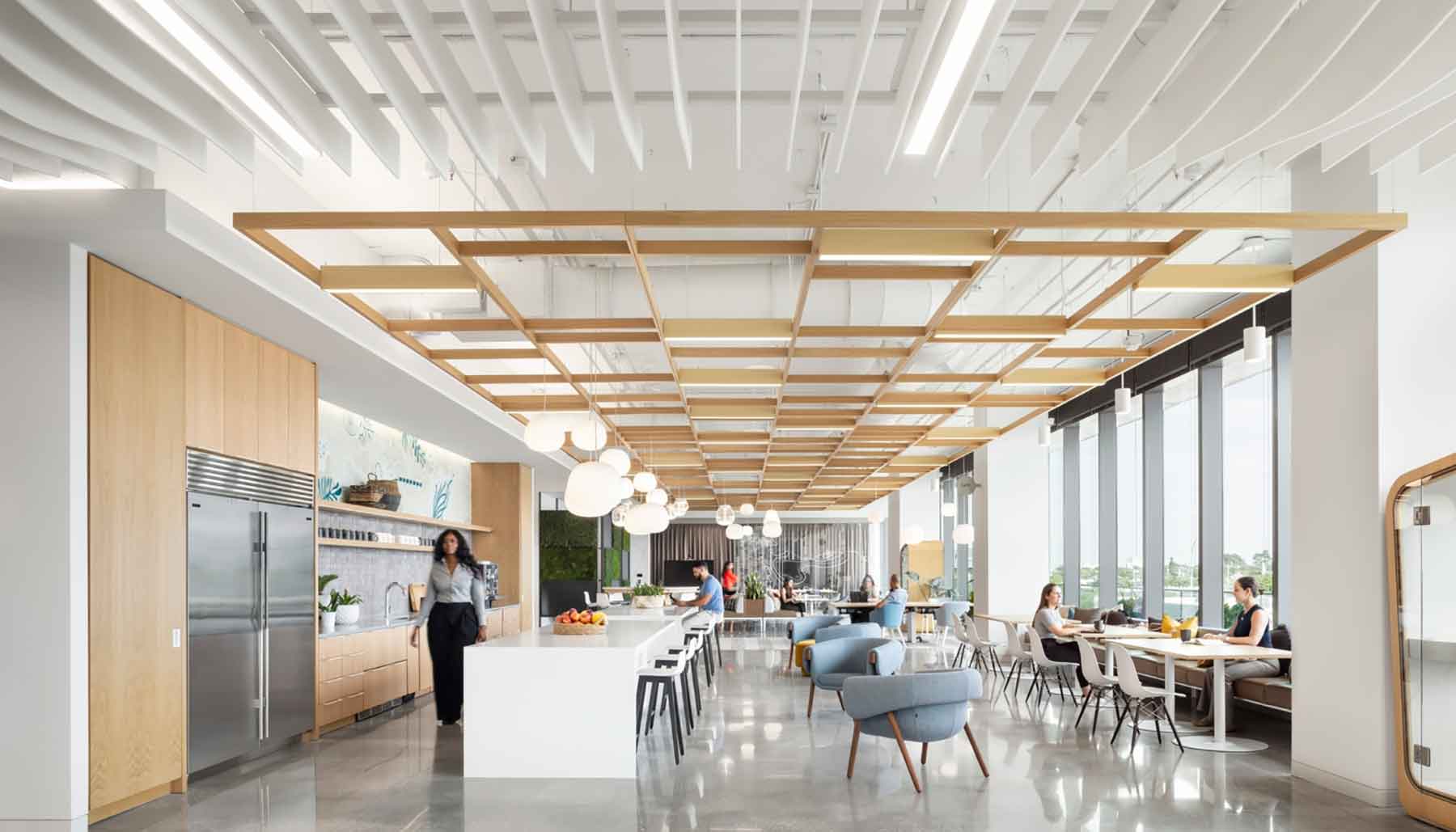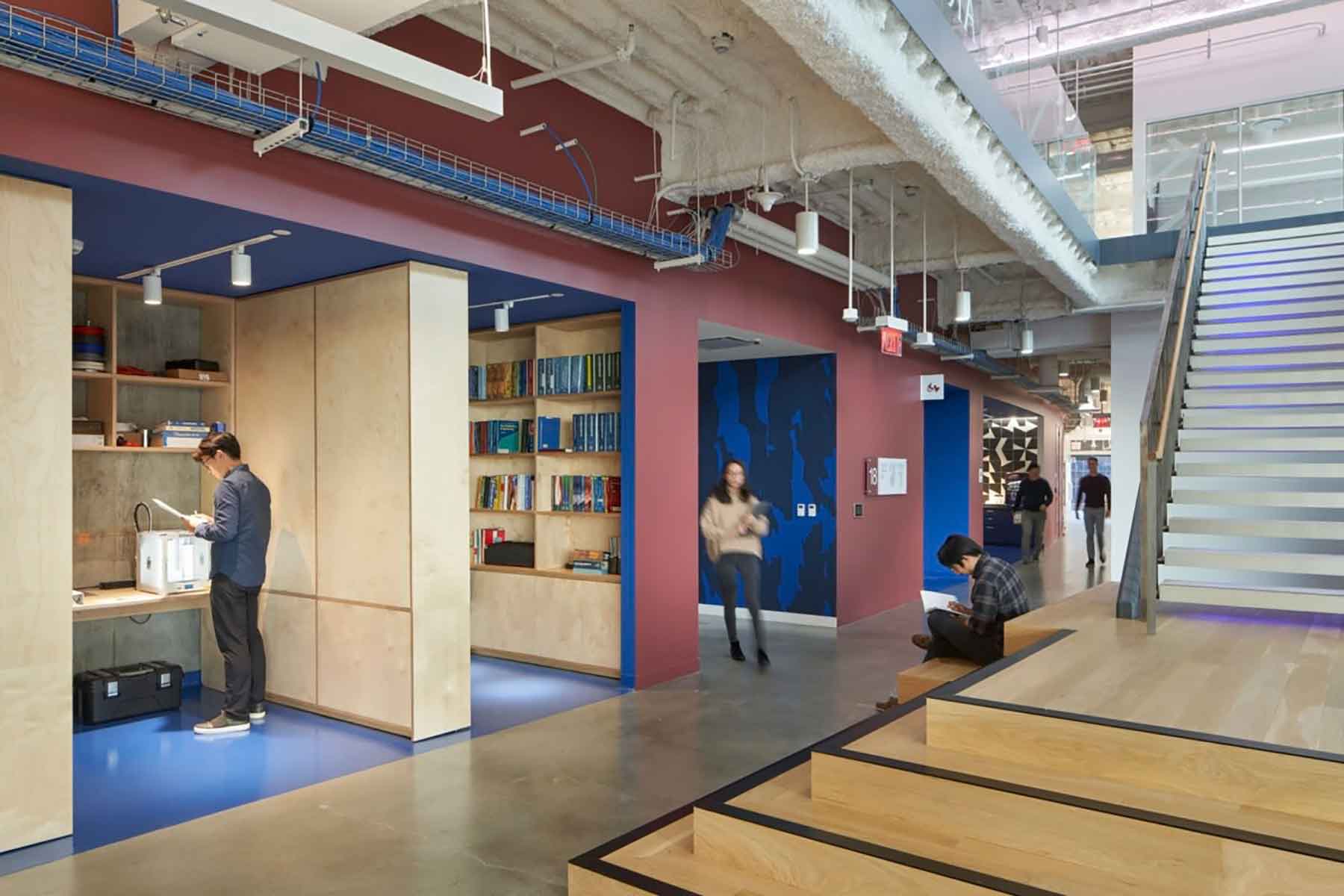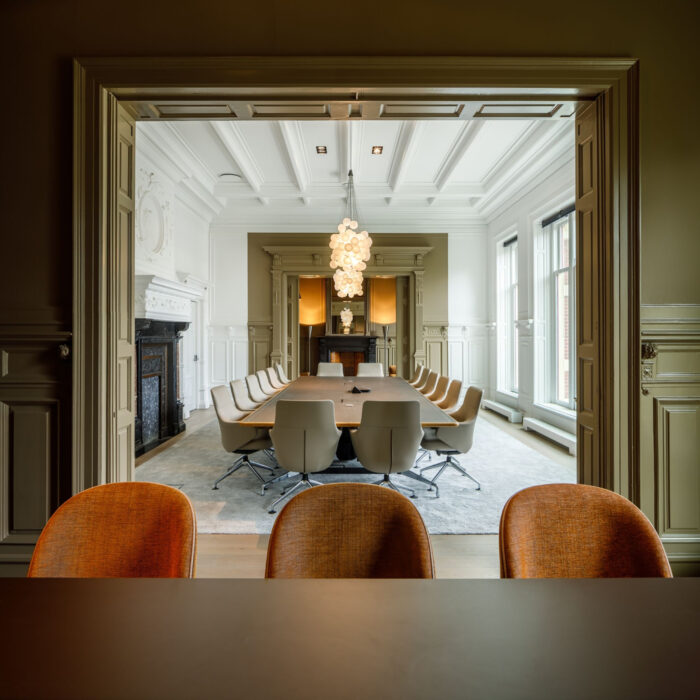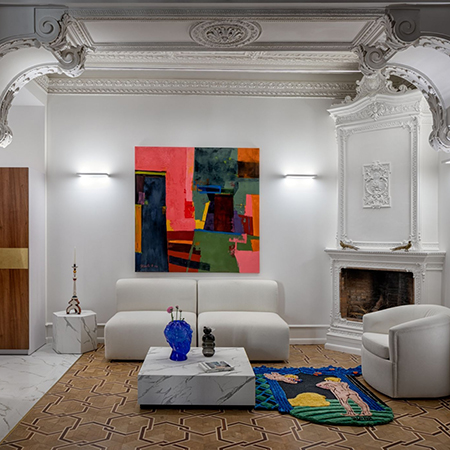Sustainability, healthy materials and open space: office design trends for 2022
In a recent study conducted by PSA Group about trends in the habitat sector, has revealed some behavior guidelines on what the offices will be like in the near future, once installed in the post-COVID era. In the following posts, we'll look at some of the most interesting takeaways. But what do professionals look for when designing an office? The study concludes that a good office interior design increases productivity by 78%. For this reason, professionals give priority when designing the flexibility, followed by natural light and ergonomics. It also gains followers sustainability, healthy materials and the concept of open space.
A hybrid work model
El remote work It is a trend and we are currently in the process of transformation. What is the fate of the offices in this new context? 73% of workers want flexible and remote work options, but 67% would also like to have in-person interactions. All the data point towards models of hybrid work where different modalities will coexist: from the workers gigs (workers or collaborators of the companies), going from 10% remote work to models that combine face-to-face and work at home, to on site workers who, by their own decision, are in the office full time. Some issues that hindered the entry of teleworking are being left behind. A survey conducted in December 2020 among 100 managers operating in Asia, Latin America, the United States, and Europe revealed that one in 10 leaders prefers hybrid solutions for their teams, as team productivity increased by 58% with this work model.
Arub offices in Los Angeles
Flexible and adaptable jobs
The need to attract and retain the most talented employees has become a critical issue. In recent months, companies and workplaces have adapted to offer employees greater flexibility in his way of working; For example, the engineering and design company Arup has chosen to give full flexibility to its employees through the program Work Unbound, eliminating the day from Monday to Friday. Following its pilot test in Liverpool, Arup found that 87% of employees felt their productivity had improved. Labor models are in a process of transformation. In the coming decades we will see how flexibility increases in terms of models and working hours. The industrial fabric will be more diverse, both culturally and generationally, and part-time contracts with workers who will work on specific projects during certain periods of time will increase.
Work expands to other places outside the office, from homes to the street or woods. For example, the national parks of japan They are taking advantage of the rise in remote work amid the pandemic, boosting facilities to allow for travel by telecommuters. Hotels are also offered as work spaces. In this context, the office spaces are redefined based on two fundamental questions: how to make the most of the company's resources and assets while generating the lowest possible cost; and how to turn the office into a talent attraction space, creation of corporate culture and interrelation between employees.
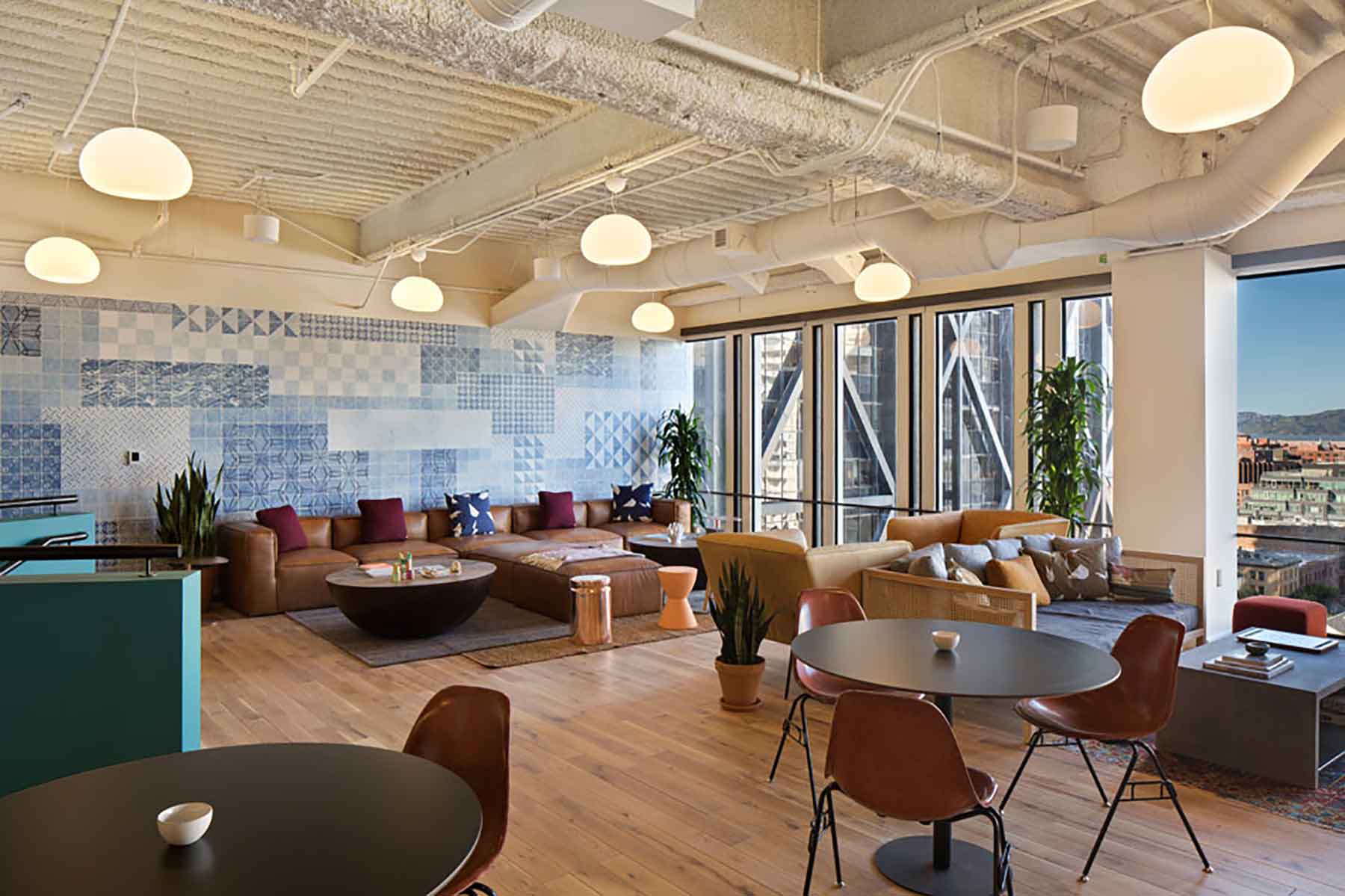
The rotating office
In an increasingly flexible labor reality and with more remote work options, what sense do offices make in relation to the company? We use less and less office or study space; however, it is an asset with the same maintenance costs, regardless of the intensity of use. The rotating offices They propose models of work stays shared by several companies either alternately or simultaneously. Offices in the coming decades will have to adapt to a work culture marked by hybridization, agility and interconnection, not only with their own co-workers, but with other partner companies.
The real estate portfolios they are in transition. 87% of executives expect to make changes to their real estate strategy in the next 12 months. These plans include the consolidation of the space of Offices in main locations and/or the opening of more satellite locations. In fact, 64% believe that offices will increasingly move to the suburbs. In the next three years, while some executives hope to reduce office space, 56% anticipate needing more. These mixed results show that some companies are planning to reinvest the remote work dividend in new ways to create a special office experience.
There is an increase in companies that look favorably on approaching shared office models. For example, in the UK the demand for flexible use offices in suburban locations has increased by 267%. Globally, the flexible office space market has grown at an average annual rate of 23% since 2010. The shared office space will generate greater mobility of offices, so it is necessary to think of solutions that are easy to transport.
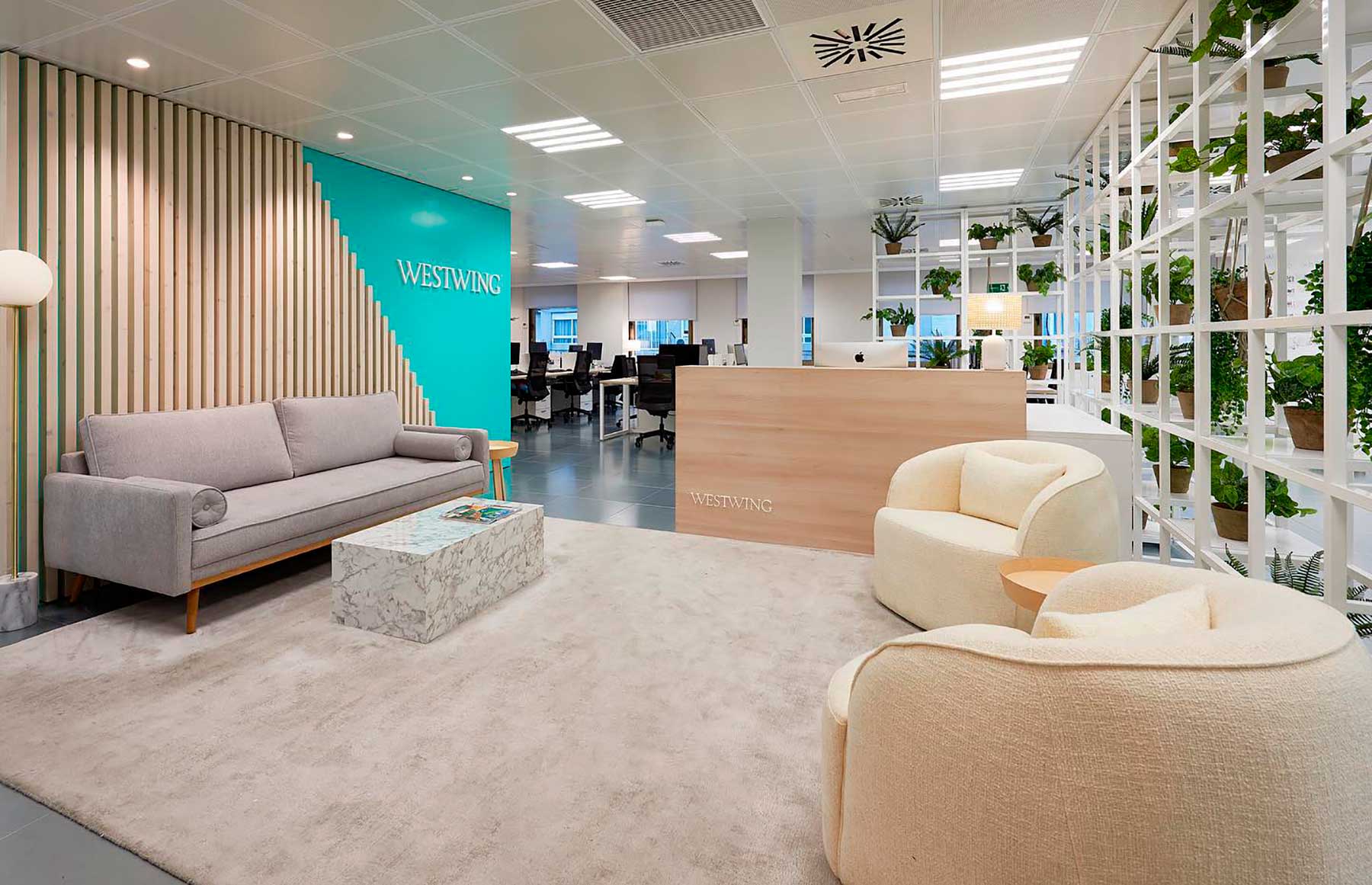
Effects on corporate culture
One of the main impacts for the work will be the role offices will play in creating a corporate culture. The transmission of corporate culture is one of the essential roles of Offices. In a context of change with shared spaces, it will be necessary to look for new solutions to generate a feeling of own stay, both for the brand and for office users.
While up to now the offices were crucial to project the brand, in this new reality they focus more on the labor relations and the generation of synergies. However, company executives are beginning to wonder how the corporate culture can survive with remote work. 68% of them believe that to maintain a strong corporate culture, workers they must come to the office more than three days a week. At the same time it will be necessary to search flexible and transportable solutions so that the company is able to project the brand in a space shared with other firms and generate a feeling of belonging and a meeting place among employees.
healthy offices
La health in the workplace it will become a central issue. It not only reduces costs related to absenteeism due to stress and illness, but more and more companies offer improvements in their complementary health care, including incentives dedicated to the psychological health. They are getting going "welfare actions" in the offices, through the creation of relaxation areas, sports groups, the inclusion of healthy menus and the presence of company trainers and psychologists in charge of Mental Wellness.
Concern for health has also reached the offices and it will be a great line of work that advocates creating spaces for healthier work. In fact, “the WHO (World Health Organization) has pointed out stress in the workplace as something we all need to pay attention to. This approach to work is also resulting in a culture of burnout. We live with outdated assumptions that presenteeism equals productivity, which we know is not true.
 What will never change...
What will never change...
Despite the benefits of hot desk (unassigned tables), the truth is that we like to have our own space. It will be necessary to help users to set up your space staff quickly and easily. Panels Acoustic Plus by Limobel Inwo are a system of mobile walls that function as creative supports and space dividers, allowing the office to be reconfigured easily and quickly.
The office is still essential for many people. helps them to concentrate, build relationships with colleagues, help Separate the work and private spheres… Although office spaces are tamed, they still have their own unique essence.
Photos: OfficeSnapShots
